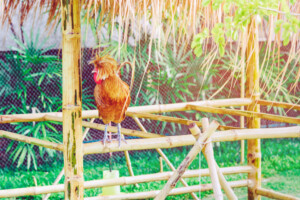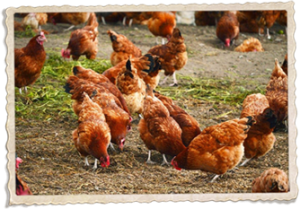The chickens have come home to roost…literally. Chicken roosts, or roosting perches, are a familiar concept to veteran poultry keepers, but not so much for novices. There are a lot of questions soon-to-be chicken owners will have regarding roosts: what are they? How do you build them? Do you need them?
Here we seek to answer all of your questions regarding chicken roosts. Read on to learn more:
What is a chicken roost?
A chicken roost (also known as a roosting perch) is an elevated area in your coop where your chickens can rest. Chickens naturally seek out elevated positions to stay away from predators. As such, a roost gives them a safe place to relax, free from predators and even other birds. Think of a roost as their “special place”—the place that they go when they need a bit of a break.
Do my chickens need one?
If you want happy and healthy chickens, then you should build a roost. Chickens need a roost to rest and recuperate. In fact, roosts so essential to your chicken’s well-being that they’re considered a part of the Five Freedoms of Animal Welfare:
“Freedom from Discomfort: By providing an appropriate environment including shelter and a comfortable resting area.”
How to build a chicken roost
A chicken roost works best inside of your coop, right near the nesting boxes. As such, it’s best to build one at the same time as when you’re building your coop.
Here’s how you can get started:
Height: 1.5 – 3 feet
A roost needs to be high enough for your chickens to feel comfortable, but not too high where they can’t reach it. Typically, a roost that is 1.5 to 3 feet high is sufficient, but this can fluctuate. For instance, some birds, such as bantams, enjoy high roosts up to 4 or 5 feet. Additionally, older birds may struggle to get up on a 3-foot roost, so you may need to install a small, lower perch that they can reach.
Thickness: 2 – 4 inches
Your chickens need to be able to grip the roost comfortably to ensure that they don’t fall off. As such, we recommend that the perch be anywhere from 2 to 4 inches thick. If you have smaller birds, such as bantams, you may have to downsize to a 1-inch-thick perch instead.
Length: 8 – 10 inches
Chances are that you’ll have multiple chickens wanting to get up on the roost at the same time. While your hens will pack together during the wintertime, they’ll want to spread out during the summertime. A perch that is 8 to 10 inches long should give your chickens the space that they need.
Material: Wood
Chickens instinctively seek out trees to roost in. As such, your perches should be made out of wood. You can buy wood from your local hardware store, or you can even use tree branches from your backyard. So long as it’s the appropriate height, length, and thickness, your chickens will be happy.
Chicken Roosts and the Pecking Order
After installing your roost, you’ll see your flock’s pecking order play out in real time. A pecking order is the chicken hierarchy—it determines each chicken’s social standing within their flock. In that regard, chickens that are higher up on the pecking order will get higher spots on the roost. Meanwhile, chickens lower on the pecking order will get the lower (and least desirable) spots.
To learn more about how to care for your flock, read through our blog or contact Chickens for Backyards today!

